Comparison of Biomass Pellet Fuel Types and Their Combustion Performance
Biomass pellet mill as a biomass energy pre-treatment equipment can convert agricultural and forestry processing wastes such as wood chips, straw and rice husk into high-density pellet fuel. Below I will discuss the characteristics of the three main biomass pellet fuels, wood pellets, straw pellets and rice husk pellets, and their comparative advantages and disadvantages in combustion applications.
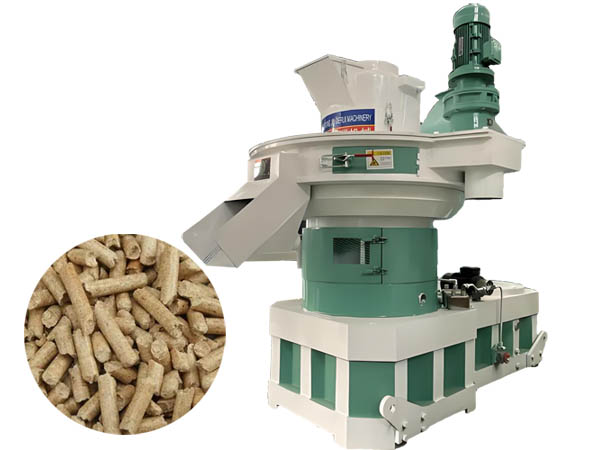
With the increasing demand for energy and the growing awareness of environmental protection, biomass pellet fuel, as a clean and renewable energy source, has been widely used in heating, power generation and industrial production. There are many kinds of pellet fuels produced by biomass pellet mill, and different kinds of pellet fuels have differences in calorific value, cost, environmental performance and so on. Therefore, choosing the right pellet fuel is crucial to ensure combustion efficiency and economic benefits.
Biomass Pellet Fuel Types and Characteristics
Wood Pellets
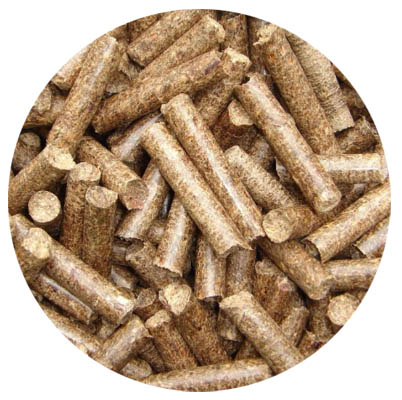
Wood pellets are mainly made of pure wood materials, such as miscellaneous wood, pine, redwood and so on. It has a high calorific value, is not easy to coking, stable combustion, and is suitable for use in biomass burners, biomass hot air stoves and other equipment. The advantages of wood pellets lie in their high calorific value and good combustion performance, but the cost is relatively high, mainly attributed to the price of raw materials and the complexity of the processing.
Straw pellets
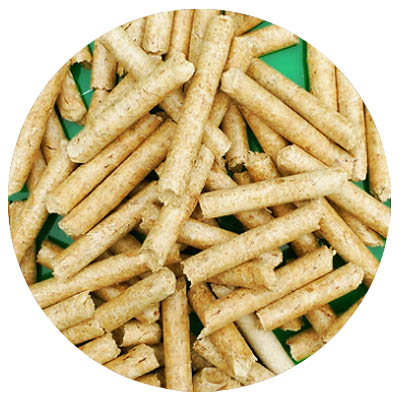
Straw pellets are mainly made from crop stalks such as wheat straw and corn stalks. The lower cost of this pellet fuel makes it suitable for heating and power generation needs in large-scale agricultural production. Straw pellets have good environmental performance, but their calorific value is relatively low and their combustion efficiency may not be as good as that of wood pellets. Therefore, when choosing straw pellets, its cost-effectiveness and combustion needs need to be considered.
Rice Husk Pellets
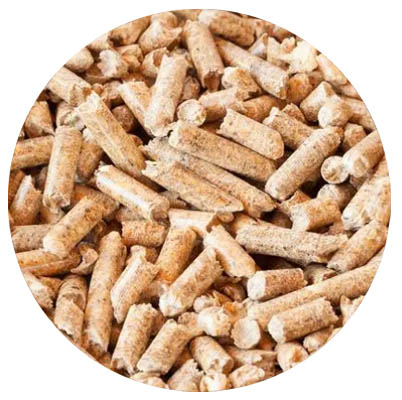
Rice husk pellets are made from rice husks and have a high calorific value and low ash content. This pellet fuel is suitable for small biomass hot water stoves and heating stoves because of its lower cost and good environmental performance. The stable combustion performance and low ash content of rice husk pellets are conducive to the reduction of polluting emissions during the combustion process.
Reference standard for choosing biomass pellet fuel
Equipment type
Choose the suitable fuel according to the type of combustion equipment. Small-scale equipment is suitable for choosing pure wood pellet fuel with low ash content to ensure combustion efficiency and stability of equipment operation; while large-scale equipment such as chain stoves can adapt to a variety of fuels and have a wider range of choices.
Heat value demand
According to the calorific demand of the equipment, choose the fuel with moderate calorific value. Wood pellets are suitable for equipment requiring high energy output due to their high calorific value; while straw pellets and rice husk pellets are suitable for occasions with low calorific value requirements.
Cost Considerations
Consider the price of the fuel, transportation costs and supply stability to choose a cost-effective fuel. Straw pellets and rice husk pellets are suitable for large-scale applications due to their low cost, while wood pellets are more costly, but their advantages in high calorific value demand situations should not be ignored.
Conclusion
As a clean and renewable energy source, biomass pellet fuel has a broad prospect in energy utilization and environmental protection. Wood pellets, straw pellets and rice husk pellets have their own advantages and disadvantages, and the selection of suitable fuels requires comprehensive consideration of factors such as equipment type, calorific value demand and cost-effectiveness. Through rational selection and utilization of biomass pellet fuel, not only can improve combustion efficiency and economic benefits, but also reduce environmental pollution and promote sustainable development.
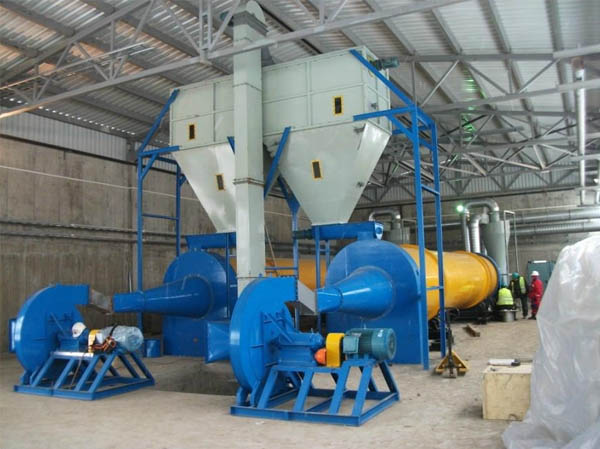
--> Working Principle of Pellet Mill and Pellet Plant
Market Prospect
With the improvement of environmental awareness and the adjustment of energy structure, the market demand for biomass pellet fuel will continue to increase. The application of biomass pellet mill in heating, power generation, industrial production and other fields has a broad prospect, especially in the replacement of traditional energy with significant advantages.
News
- Small Pellet Machine Manufacturer-Kingman
- Application of Wood Pellets and Use of Biomass Pellets
- From Fossil Fuel into Biomass Pellet Fuel
- Biomass Pellet Making Machines Market
- Applying of pellet stoves for home use
- Highland pellets to build $130 million facility in arkansas
- How to deal with the blocked hammer mill
- How to Make Wood Pellets with Sawdust
- The government policy promotes the development of biomass fuel
- Market analysis of biomass pellet fuel
- Strategic positioning of renewable energy
- Biomass energy has pass through the pre assessment
- The key point of deep processing of biomass pellet
- Harbin is promoting the development of biomass machinery
- The development of biomass formation technology I
- The development of biomass formation technology II
- Biomass energy industry is now going full tilt in 2015
- Rapid increasing demand of sawdust pellet on the market
- Pellet fuel market in EU
- Chinese Biomass Energy Conference held in Beijing
- Future market development of straw pellet mill
- Peanut Shell Pellet Mill Makes High Quality Pellets
- The utilization of straw is only 5%, biomass energy needs our attention!
- Corn straw pellet machine relieves the tight supply of fuel energy
- Reasons for loose or not forming of biomass pellet mill





